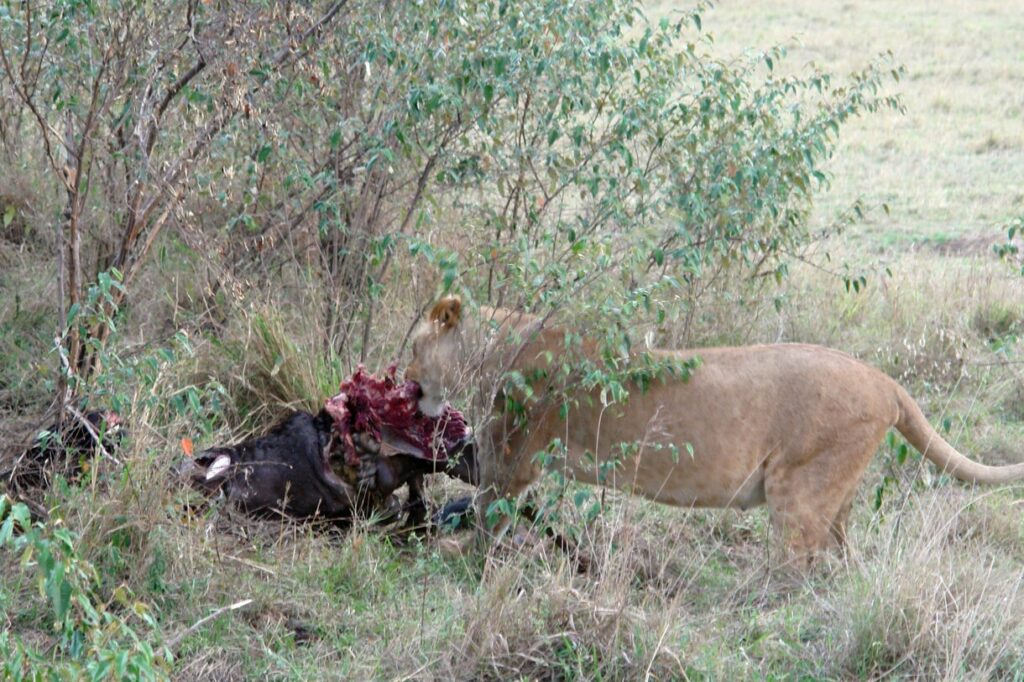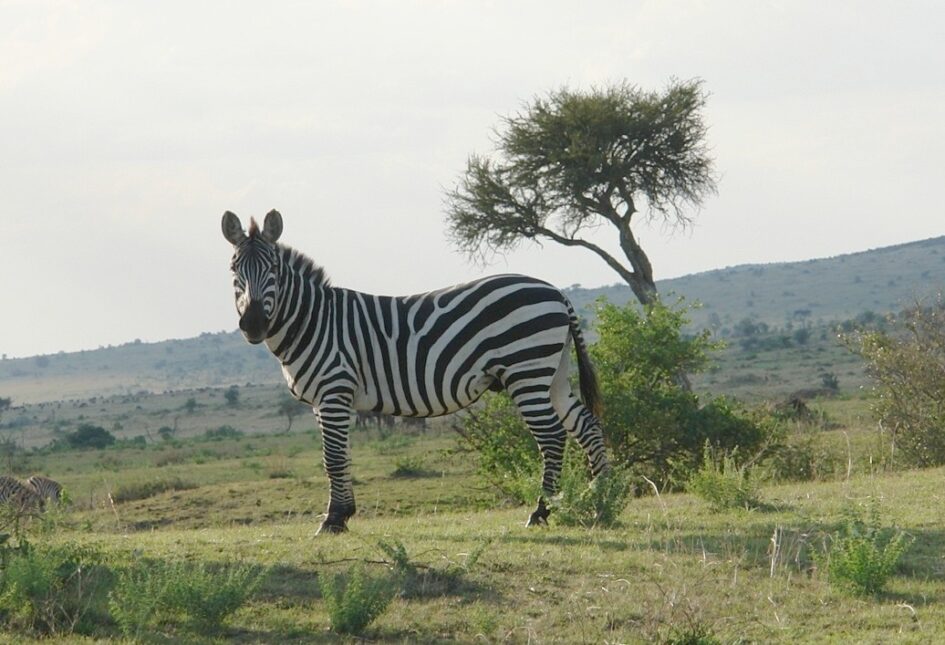SAFARI: In the Realm of the Great Migration
Our safari began in a 6-person group with guide Sammy. Our first encounter with Masai Mara’s wildlife exceeded all expectations. On day one, we witnessed vast herds of ungulates and – most thrillingly – predators including lions and cheetahs. Fun fact: Masai Mara is the Kenyan continuation of Tanzania’s Serengeti, named after the Maasai people and their word “Mara” meaning “spotted” – referencing the acacia trees dotting the savanna.

Subsequent days brought even more incredible sightings: wildebeest herds beginning their legendary Great Migration to Serengeti (annually, over 1.5 million animals trek 500 miles!), elephant family groups, graceful giraffes, and vigilant jackals. Two scenes remain etched in memory: a lion’s failed zebra hunt and a cheetah feasting on a fresh kill. Historical note: The safari tradition dates to early 1900s when Theodore Roosevelt spent a year in East Africa during a scientific expedition, killing over 500 animals. Thankfully, modern safaris focus solely on observation and photography!

One highlight was Keekorok Lodge, built in the 1960s as Masai Mara’s first permanent lodge. Its glass observation deck overlooking a watering hole offers prime hippo, zebra and bird viewing. Night observations (when predators are most active) are extraordinary, though rooms cost $200-300/night. Insider tip: Rumor has it you can avoid lodging fees by buying drinks and spending the night at the observation deck – worth negotiating when booking!

Nakuru vs. Amboseli: Mixed Experiences
After three magical days in Masai Mara, we headed to Lake Nakuru, famous for pink flamingo flocks (peaking at 1.5 million birds!). Unfortunately, our guide persuaded us to skip park game drives for a paid boat ride on neighboring Lake Naivasha. We later discovered Nakuru offered far more wildlife – we spent just 4 rushed hours there after a full day’s travel.

Next was Amboseli National Park, but transport issues (missing promised transfers, a dismal hotel) discouraged even our German and French companions. While Amboseli offers iconic Kilimanjaro views (Africa’s highest peak at 19,341 ft), its dusty steppe landscape hosts fewer animals than Masai Mara, making sightings more challenging.

Practical Safari Planning Tips
- Choose wisely: For most travelers, 4 days in Masai Mara (Kenya) or Serengeti (Tanzania) suffices. Other parks often show similar wildlife in less spectacular settings.
- Beware scams: Some guides cut corners with park time ($40/24hrs). Demand detailed written itineraries and monitor compliance.
- Tipping: Contrary to some guides, tips aren’t mandatory. Tip only for exceptional service (typically $5-10/day).
- Best timing: Great Migration occurs July-October in Masai Mara, November-July in Serengeti.
- Safety first: Never exit vehicles in parks (except designated areas) – the cardinal safari rule!

Safari offers unforgettable experiences but requires savvy planning. In our next installment, we’ll share our Kilimanjaro climb and Zanzibar’s paradise beaches!

Leave a Reply